 What is MBCO?
What is MBCO?
The MBCO, or Minimum Business Continuity Objective, is the minimum level of products or services provided during a disaster. Articulated correctly, the MBCO guides what should be recovered and how extensive the recovery should be.
For example, an MBCO may provide telephone services to all premium-tier customers within 4 hours of a disruption. Here, we see the call centre as a CBF providing service to "premium-tier" customers, and this function, should it be disrupted in a disaster, would have to be recovered and resumed within 4 hours.
 Typically, MBCOs can be classified as either Corporate MBCO or Business Unit MBCO.
Typically, MBCOs can be classified as either Corporate MBCO or Business Unit MBCO.
Corporate MBCO
 The Corporate MBCO defines the minimum level of critical products, services, or functions an organisation must deliver during a disruption to ensure its survival, meet legal/regulatory obligations, and maintain stakeholder trust.
The Corporate MBCO defines the minimum level of critical products, services, or functions an organisation must deliver during a disruption to ensure its survival, meet legal/regulatory obligations, and maintain stakeholder trust.
It represents the corporation's overarching continuity goals, focusing on high-level priorities like financial stability, brand reputation, and compliance.
The Corporate MBCO is written from a management perspective. Therefore, it is not meant to cover every detail but rather focus on the most significant must-haves in the organisation.
Business Unit MBCO
The Business Unit MBCO specifies the minimum operational requirements for individual departments (e.g., IT, HR, Production) to support the Corporate MBCO.
It outlines the essential processes, resources, and outputs each unit must sustain during a disruption to contribute to the organisation’s broader continuity goals.
Based on the highlighted priorities, business units would take their cue from the Corporate MBCO and develop their own BU MBCOs. Generally, the Corporate MBCO is business-driven, so you might not see life and safety mentioned in it, but this does not mean employee safety is a low priority. Instead, such crisis priorities are a given and must be carried out.

 Conducting a BIA is essential for your organisation's business continuity programme. Knowing these key concepts is critical for successfully implementing a business impact analysis exercise.
Conducting a BIA is essential for your organisation's business continuity programme. Knowing these key concepts is critical for successfully implementing a business impact analysis exercise.
The incorrect implementation of the BC programme causes a lack of clarity, often referred to as "precision", in understanding the BCP terminology.
Comparison: Corporate MBCO vs. Business Unit MBCO
Aspect |
Corporate MBCO |
Business Unit MBCO |
|---|---|---|
| Scope | Organisation-wide, holistic view. | Department-specific, narrow focus. |
| Focus | Survival, compliance, and stakeholder trust. | Operational continuity of critical unit functions. |
| Stakeholders | Board, executives, regulators, shareholders. | Department or BU heads, employees, internal teams. |
| Timeframe | Longer-term (weeks/months). | Shorter-term (hours/days). |
| Dependencies | Relies on Business Unit MBCOs to succeed. | Interdependent with other units; supports Corporate MBCO. |
| Example Objectives | - Maintain liquidity. - Avoid regulatory penalties. - Protect brand reputation. |
- IT: Restore core systems within 24h. - Production: Achieve 50% output within 48h. - HR: Ensure staff safety and communication. |
| Alignment | Sets the strategic direction for the organisation. | Tactical execution aligned with Corporate MBCO. |
Key Takeaways
-
Hierarchy: Business Unit MBCOs feed into the Corporate MBCO, ensuring alignment between operational and strategic continuity goals.
-
Interdependence: Failure of a Business Unit MBCO (e.g., IT systems not restored) can jeopardize the Corporate MBCO (e.g., inability to process customer orders).
-
Flexibility: Business Unit MBCOs are adaptable to unit-specific risks, while the Corporate MBCO remains stable as the organization’s "north star."
By defining both levels of MBCOs, organizations ensure resilience at all tiers, balancing strategic priorities with operational practicality.
Structure and Format of MBCO
Here is some quick guidance on the writing of the MBCO:
- Identify your organisation's mission
- This would be the primary purpose of the organisation
- Identify your organisation's essential products and services
- These should ideally be aligned with the task of your organisation
- For each key product/service, consider the various impacts of a disruption (e.g., fire) at headquarters, call centres, and warehouses.
- For each key product/service, determine either:
- To continue <Service/ Product/ Business Activity> to <Type of Customer> within <Acceptable Timeframe> OR
- To resume <Measurable percentage / Amount> OF <Service/ Product/ Business Activity> WITHIN <Acceptable Timeframe>
Examples of MBCO
| S/No | Business Unit | MBCO |
| 1 | Human Resources |
|
| 2 | Digital Tech |
|
| 3 | Retail Services |
|
| 4 | Food Services |
|
| 5 | Supply Chain |
|
| 6 | Finance |
|
| 7 | Technology Service Provider |
|
| 8 | Biomedical Manufacturing |
|
| 9 | Power Generation |
|
| 10 | Insurance |
|
More Information About Business Continuity Management Courses
To learn more about the course and schedule, click the buttons below for the BCM-300 Business Continuity Management Implementer [B-3] and the BCM-5000 Business Continuity Management Expert Implementer [B-5].
 |
 |
![Register [BL-B-3]*](https://no-cache.hubspot.com/cta/default/3893111/ac6cf073-4cdd-4541-91ed-889f731d5076.png) |
 |
 |
 |
![FAQ [BL-B-3]](https://no-cache.hubspot.com/cta/default/3893111/b3824ba1-7aa1-4eb6-bef8-94f57121c5ae.png) |
Please feel free to send us a note if you have any questions. |
 |
 |
 |
 |


![Email to Sales Team [BCM Institute]](https://no-cache.hubspot.com/cta/default/3893111/3c53daeb-2836-4843-b0e0-645baee2ab9e.png)

